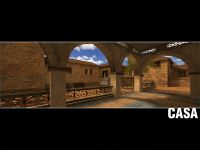
|
|
|
All times are UTC + 1 hour |
 
|
Page 2 of 2 |
[ 16 posts ] | Go to page Previous 1, 2 |
|
| Author | Message | |||
|---|---|---|---|---|
| wurst |
|
|||
Joined: 07.15.08 Posts: 4649 Location: Behind U -----tdm: nick: [dswp]GewitterOma skill: 836.716 kills: 26022 deaths: 19948 ratio: 1.30 -----bomb: nick: [dswp]GewitterOma skill: 681.751 kills: 3931 deaths: 3617 ratio: 1.08 |
||||
| Top | |
|||
| nasuta |
|
|||||
Joined: 04.05.10 Posts: 2 |
|
|||||
| Top | |
|||||
| natirips |
|
|||||
Joined: 04.13.09 Posts: 2946 Location: Solar System/≈Zagreb -----tdm: nick: [ntr]Shortly skill: 368.762 kills: 3446 deaths: 4411 ratio: 0.78 -----bomb: nick: [ntr]Shortly skill: 594.43 kills: 526 deaths: 863 ratio: 0.60 |
|
|||||
| Top | |
|||||
| KnightINDIA |
|
|||||
Joined: 08.13.09 Posts: 364 Location: India |
|
|||||
| Top | |
|||||
| wagnerj |
|
|||||
Joined: 07.25.12 Posts: 1 |
|
|||||
| Top | |
|||||
| wurst |
|
|||||
Joined: 07.15.08 Posts: 4649 Location: Behind U -----tdm: nick: [dswp]GewitterOma skill: 836.716 kills: 26022 deaths: 19948 ratio: 1.30 -----bomb: nick: [dswp]GewitterOma skill: 681.751 kills: 3931 deaths: 3617 ratio: 1.08 |
|
|||||
| Top | |
|||||
 
|
Page 2 of 2 |
[ 16 posts ] | Go to page Previous 1, 2 |
|
All times are UTC + 1 hour |
Who is online |
Users browsing this forum: No registered users and 0 guests |
| You cannot post new topics in this forum You cannot reply to topics in this forum You cannot edit your posts in this forum You cannot delete your posts in this forum You cannot post attachments in this forum |
| voice server |

|
||||||||||||||||||||||||||||||||||||||||||||||||||||||||||||||
|---|---|---|---|---|---|---|---|---|---|---|---|---|---|---|---|---|---|---|---|---|---|---|---|---|---|---|---|---|---|---|---|---|---|---|---|---|---|---|---|---|---|---|---|---|---|---|---|---|---|---|---|---|---|---|---|---|---|---|---|---|---|---|---|
|
|||||||||||||||||||||||||||||||||||||||||||||||||||||||||||||||
top 20 players
|
|||||||||||||||||||||||||||||||||||||||||||||||||||||||||||||||
|
|

















